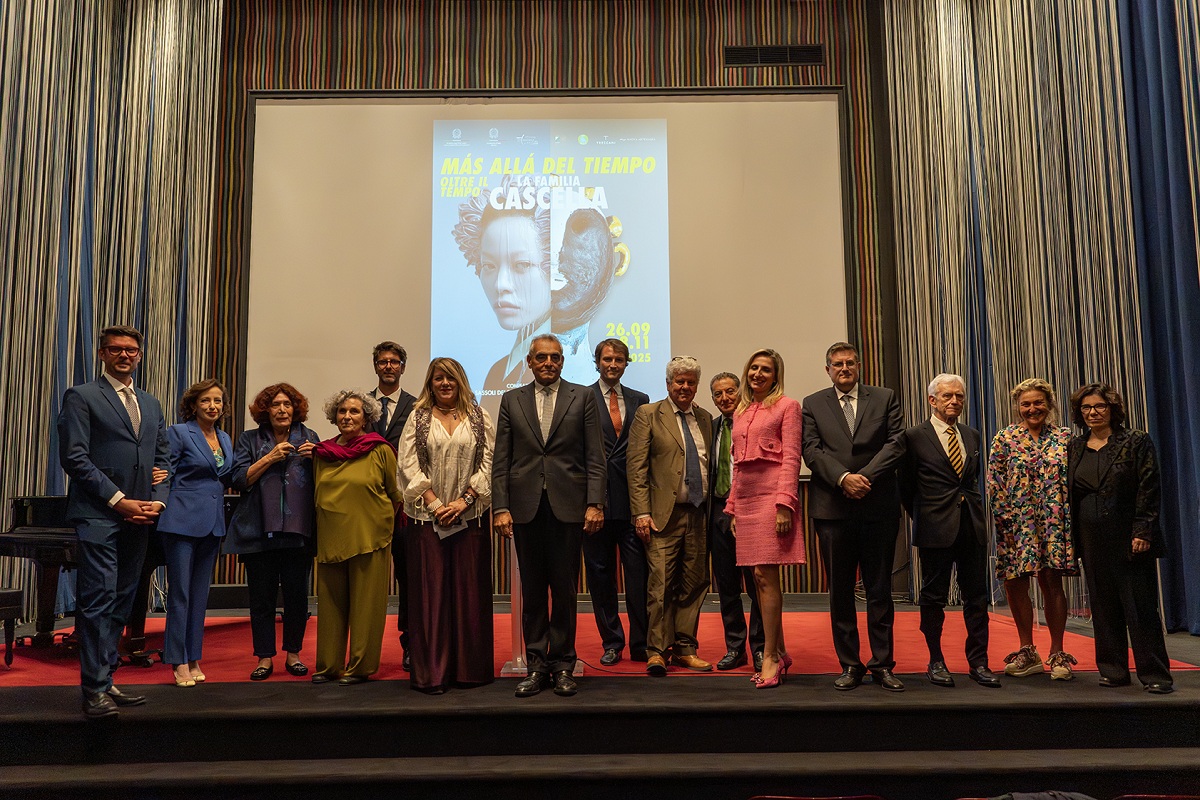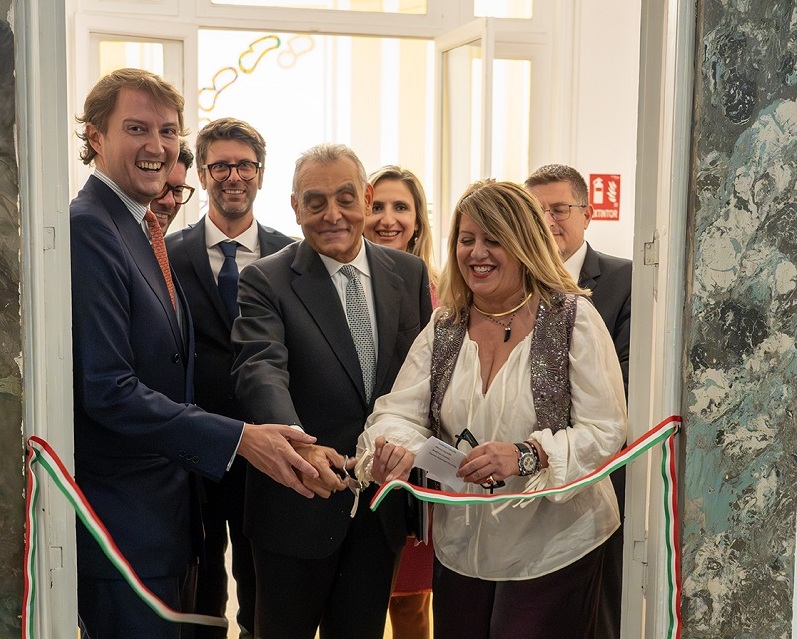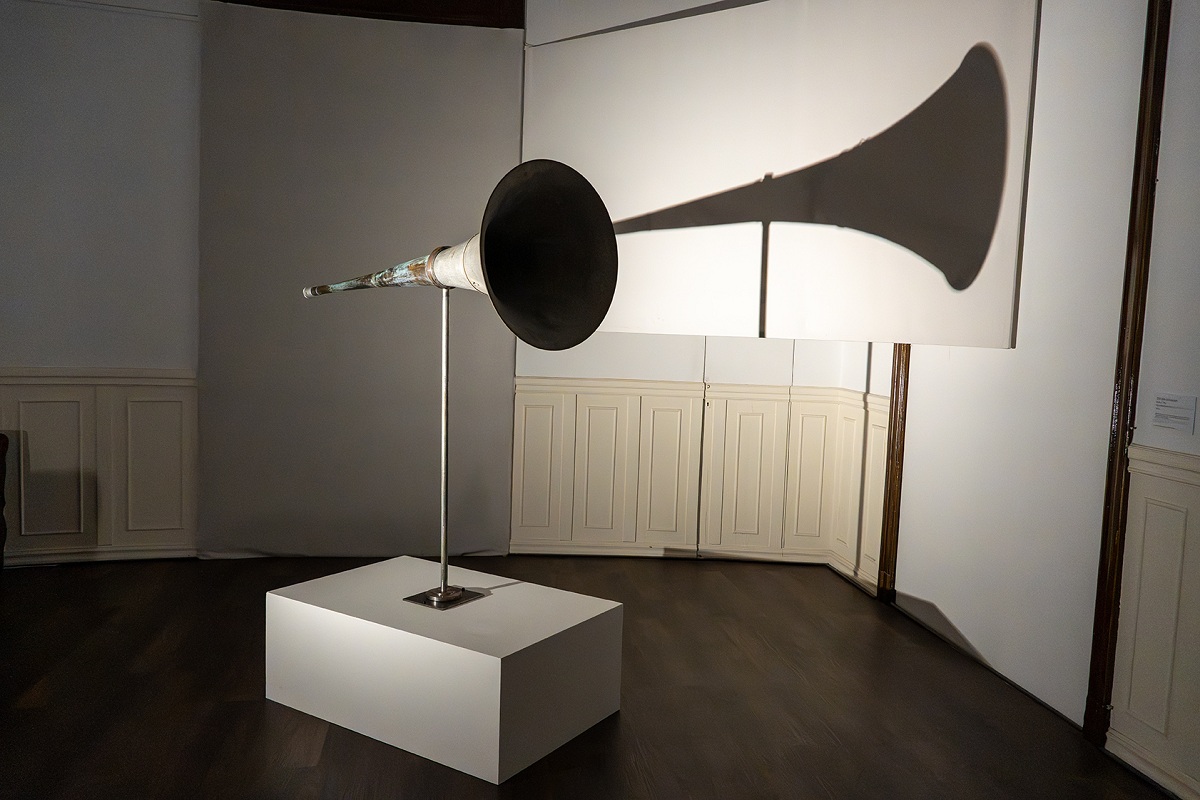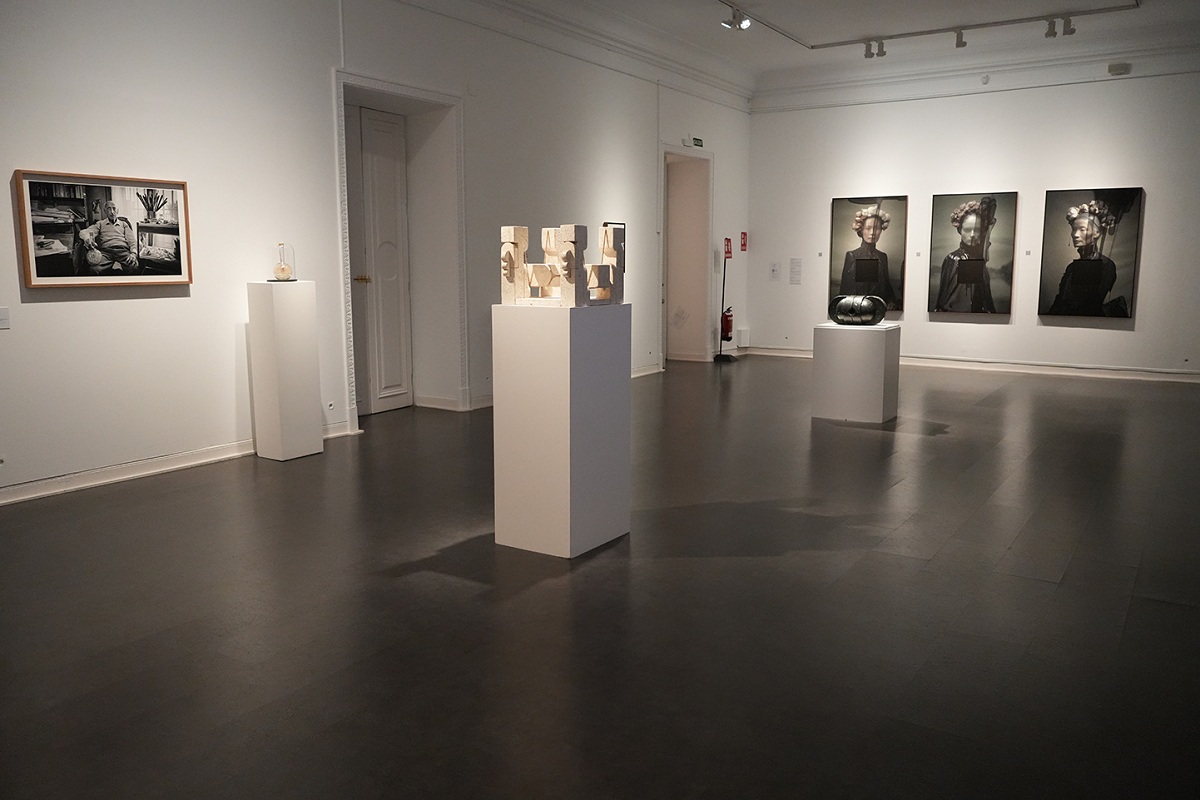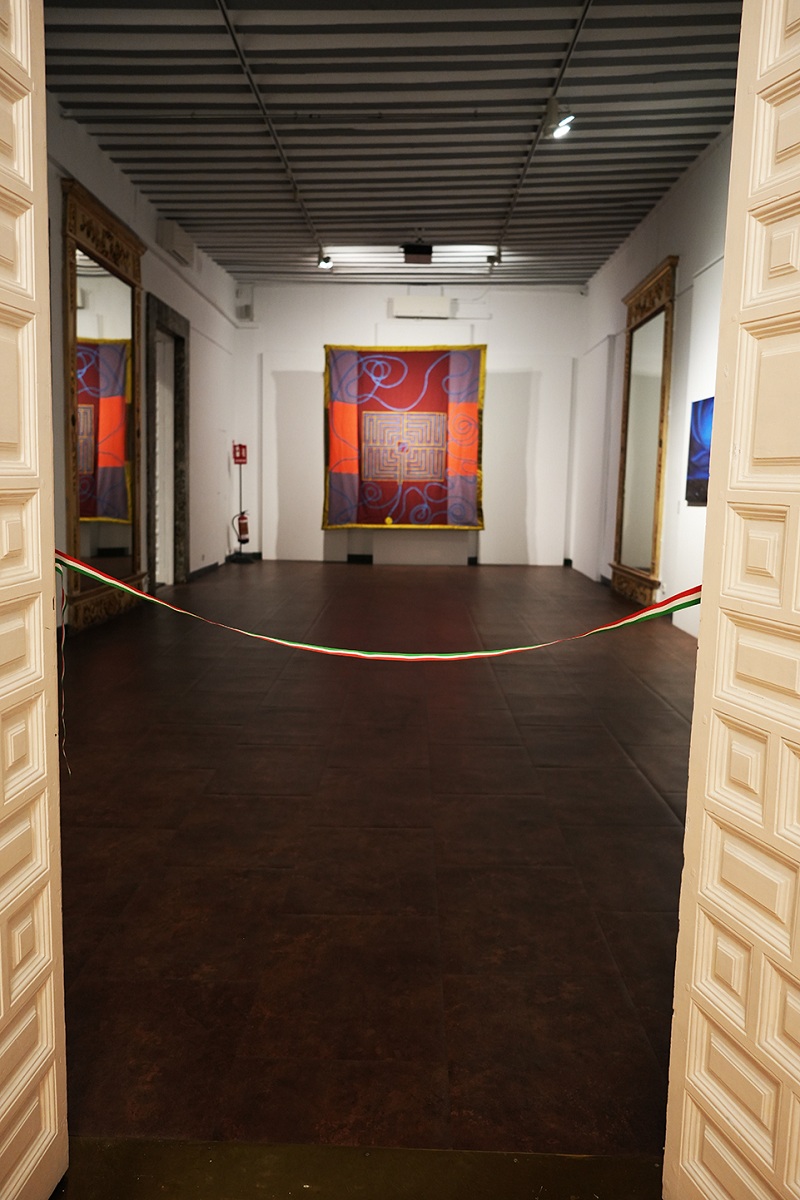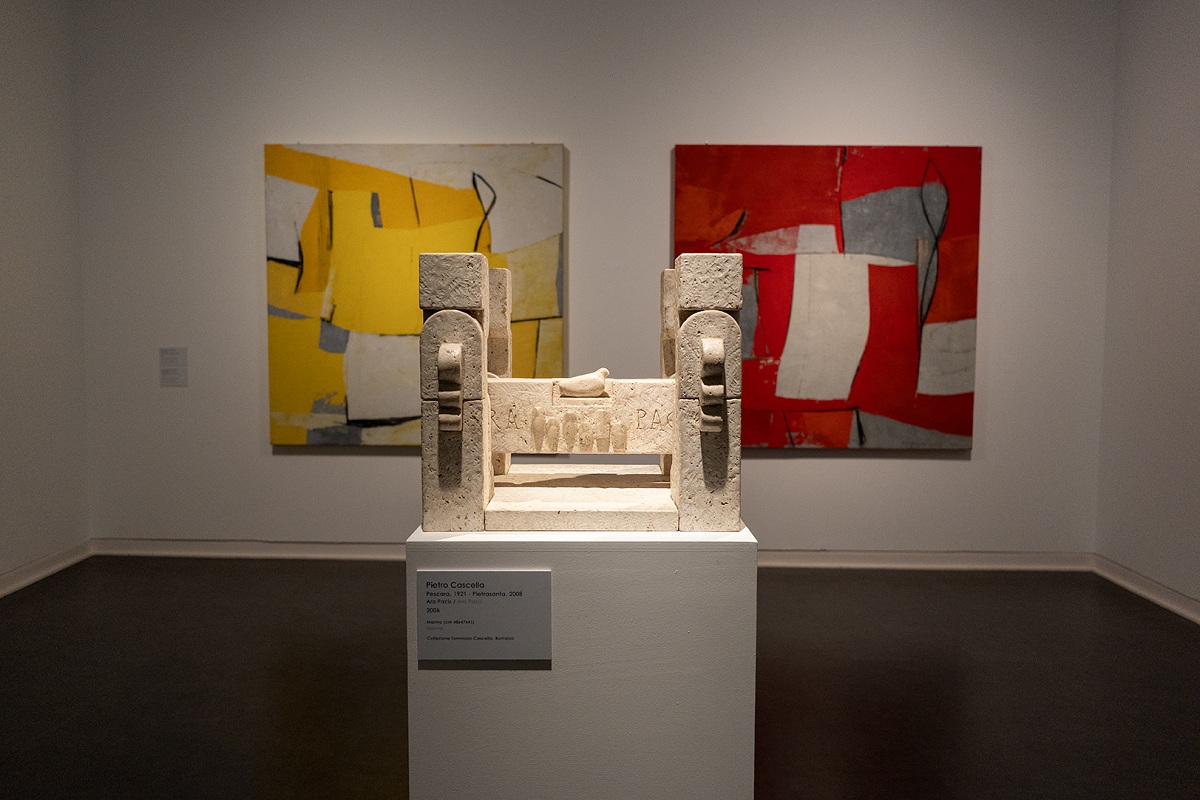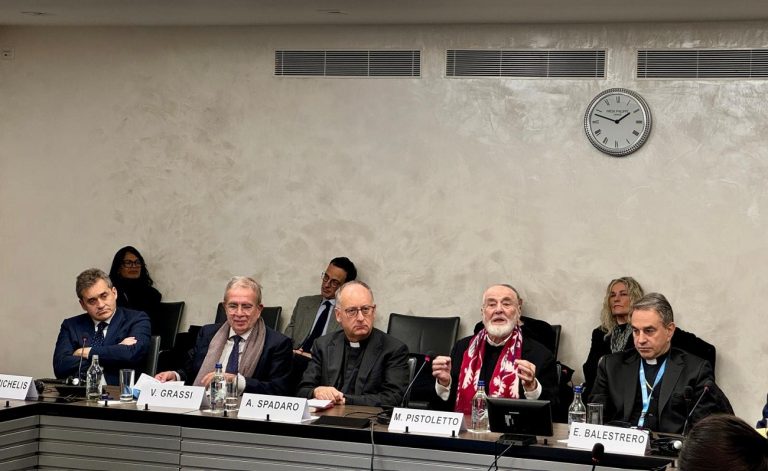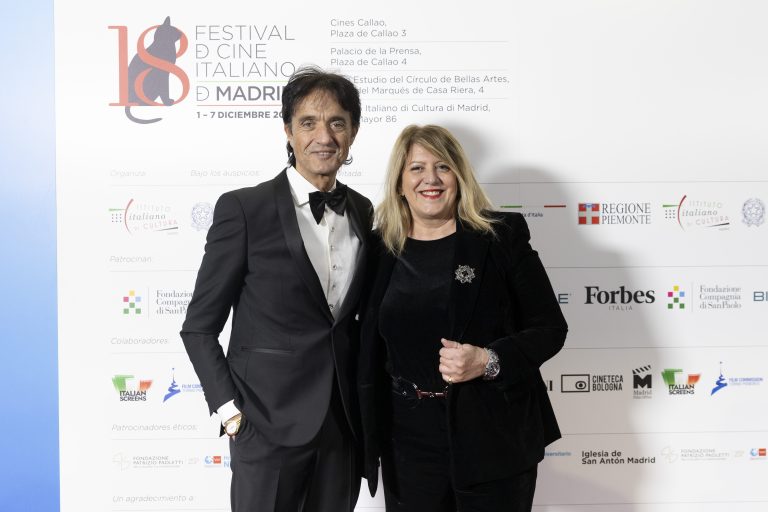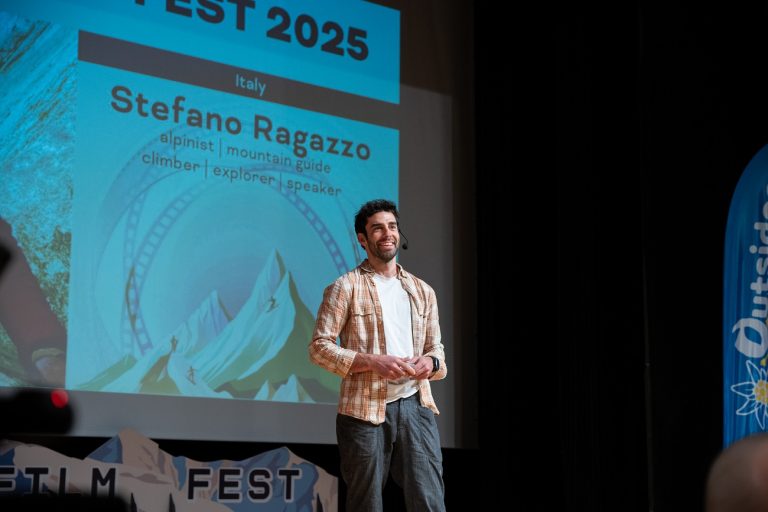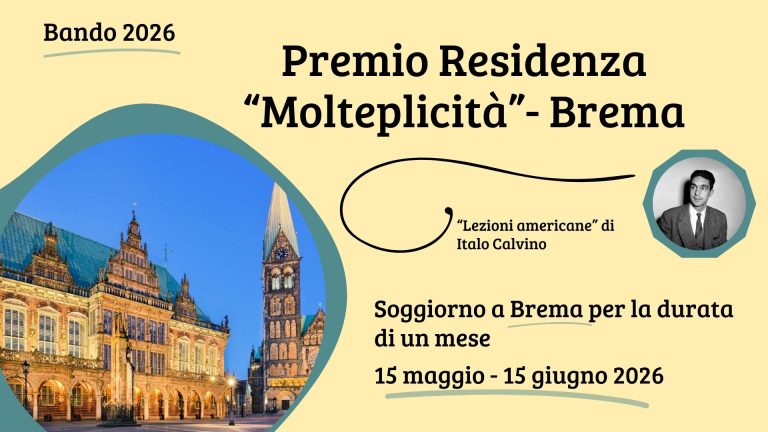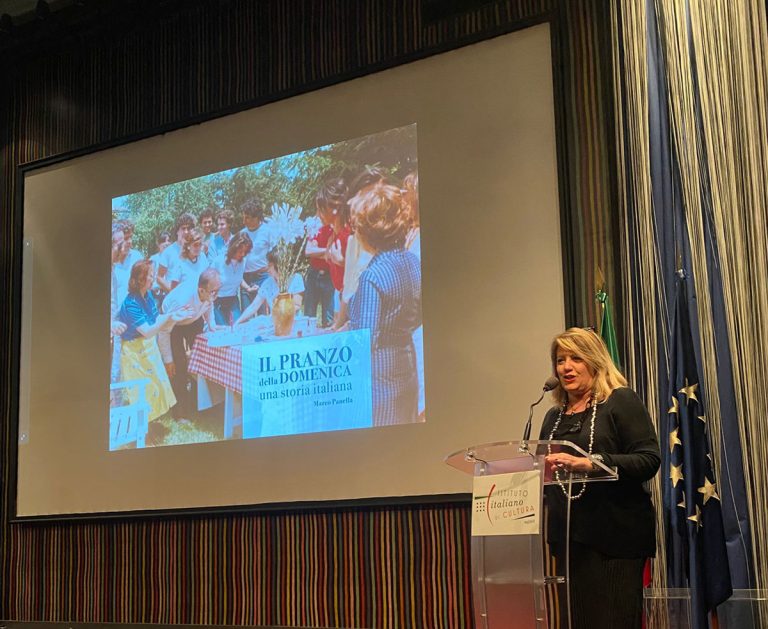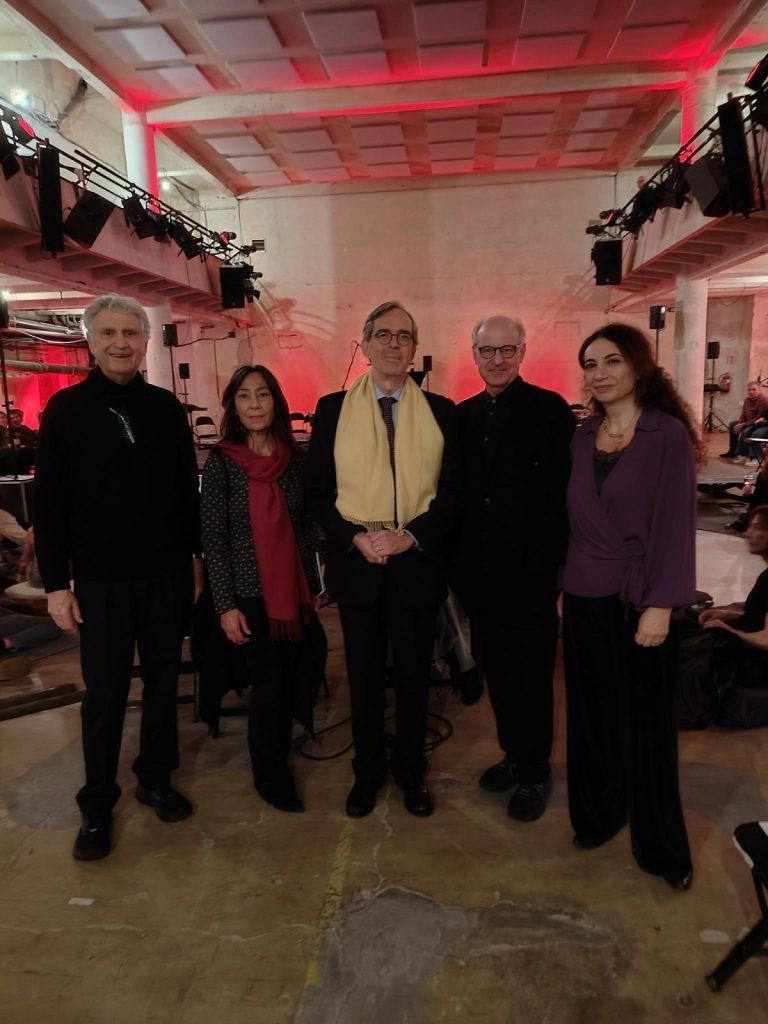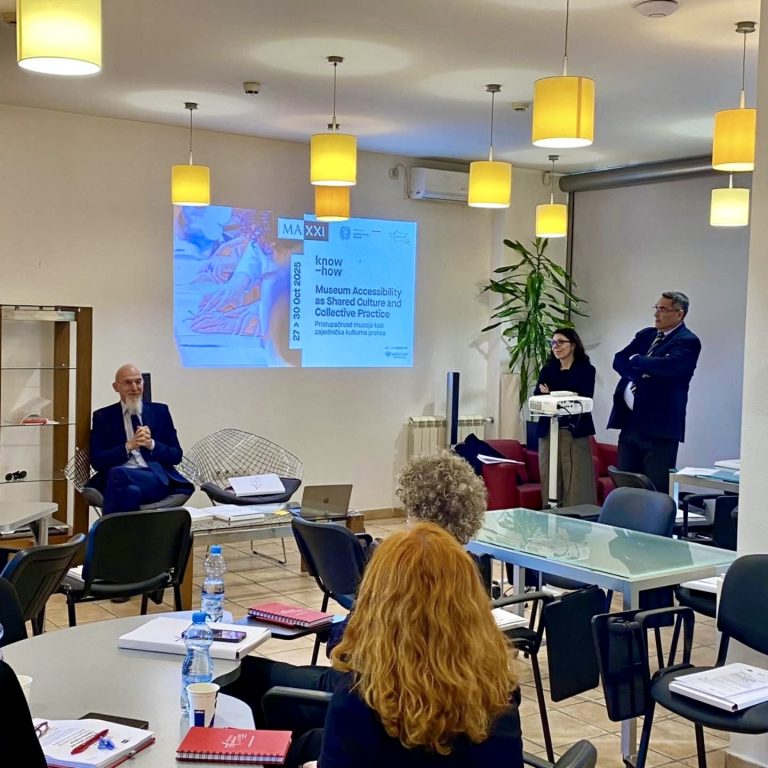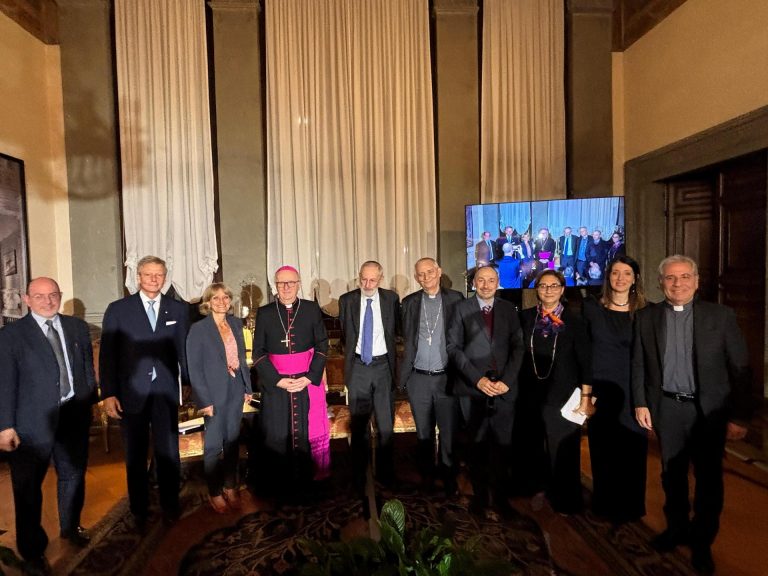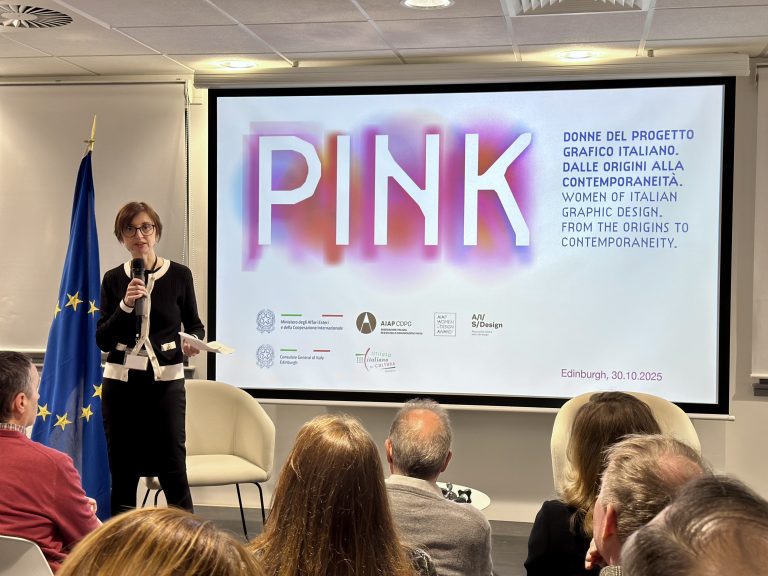To mark the 150th anniversary of the birth of the historic artistic dynasty founded by Basilio Cascella (1860–1950), the Italian Cultural Institute of Madrid presents the exhibition “The Cascella Family. Beyond Time”. The exhibition invites visitors on a journey through time, bringing together for the first time all the artists of the Cascella family. It explores the symbolic threads that connect different generations and their diverse creative expressions – from painting and sculpture to publishing, and up to the most recent experiments involving artificial intelligence.
Curated by Guicciardo Sassoli de’ Bianchi Strozzi, the exhibition is supported by the Regional Council of Abruzzo and promoted by the Casa Abruzzo Association and the Casa degli Abruzzesi in Spain. It was inaugurated on 26 September.
The exhibition opens with an installation and dialogue between the hybrid still lifes of Matteo Basilé and the video portraits of Davide Cascella, before moving “beyond time” to the works of the fifth generation of the Cascella family, featuring Matteo, Davide, and Jacopo Cascella (b. 1973).
Following the fourth generation, represented by Susanna Cascella, the exhibition continues with works by members of the third generation, who engaged with the artistic avant-gardes of their era: Andrea Cascella (1919–1990), a ceramist and sculptor of international renown, and Pietro Cascella (1921–2008), represented through preparatory studies for decorative elements and monumental works created for the Farnesina, seat of the Italian Ministry of Foreign Affairs and International Cooperation.
The exhibition then turns to the second generation, represented by Tommaso Cascella (1890–1968) and Michele Cascella (1892–1988), whose works reflect the Return to Order movement of the post-war years. It culminates with pieces by Basilio Cascella, made available through the kind loan of the Museo Civico Basilio Cascella in Pescara. Basilio’s works portray local folklore through European aesthetic canons, embodying the Symbolist and early avant-garde spirit of the late 19th and early 20th centuries, influenced by his connections with the artistic circles of Naples, Milan, and Rome.

